
Four-and-a-half year old Yoshii Kawamura of Minamiechizen Village, Nanjo District, Fukui Prefecture, and penpal of Golden Hills Elementary’s March Citizen of the Month, Trevor McGrath, takes a break from precalculus class at the Nanjo Normal School to enjoy a riveting FFFF blog post by the Fullerton Shadow.

The proposed vast expansion of Fullerton’s Redevelopment Project Area is an issue with countywide implications. The County Board of Supervisors has established a policy of opposition to the expansion: practically because it will divert property tax from other governmental agenices; and, philosophically because it raises the specter of eminent domain, and potential impacts to businesses and residents, alike.
Since Mr. Daly is running for 4th District Supervisor to replace Chris Norby we wonder what kind of position he might take on this issue, if any, before the May hearing at our city council. Fullerton City Councilman Shawn Nelson, an oft-rumored opponent of Daly, has already staked out a position of opposition to this intrusive government expansion.
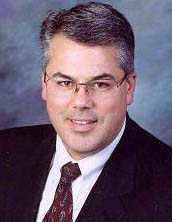
When Daly was mayor of Anaheim the that city pursued an active role of redevelopment sterilization and homogenization – just the sort of thing many Fullertonians are justifiably concerned about.

Stand by Friends. If we hear anything we will let you know.
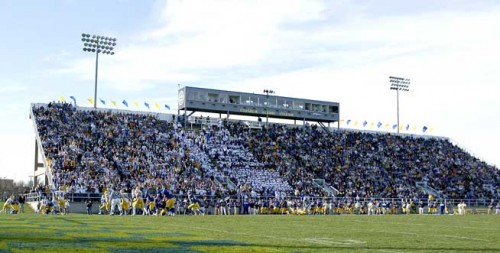
The trustees over at the North Orange County Community College District have seemingly done the impossible, conjuring up a new football stadium at the FJC campus out of thin air. Apparently the neighbors aren’t too crazy about this sleight-of-hand since it means noise, lights, traffic, etc. They decided to raise their own ruckus, and in a democracy that’s a damn fine thing.
What happened was that the locals discovered the District had been guilty of “mission creep” or bureaucratic metastasis, or whatever you want to call it. But rather than our going on, let’s let neighbor Ken Bane speak for himself (courtesy of another FFFF thread):
“the EIR only contemplated a “renovation” of the track field. but when no one was looking, they added lighing, a PA system, and seating 2000+. When we caught their hand in the cookie jar they agreed to be a “good neighbor” and do the required supplemental CEQA review, like someone following the law makes them worthy, when in fact they wouldn’t have unless we busted them. And frankly, we’re skeptical they’ll do it right from here anyway.”
We recall a Ken Bane who used to work for the Fullerton Planning Department many years ago and wonder if this is the same fellow. If it is, we have confidence that his narration of the environmental deficiencies of the project is pretty accurate.
Now it may come as a shock to some of you Loyal Friends, but it is the government itself that is often the biggest scofflaw when it comes to abiding by CEQA (California Environmental Quality Act). Even when they don’t get a categorical exemption public agencies often find ways of dodging the intent of CEQA that could land you or me in the slammer.

As our own Fullerton Harpoon pointed out in response to Mr. Bane, this enhanced plan will require an amendment to an approved EIR including new facts not previously in evidence. Traffic, Noise and Aesthetic EIR categories will have to be addressed, and the new document should also include alternatives to the project – in this case one alternative could be to rent somebody else’s facility as a congenial part of a “no build” alternative; maybe it could be the Fullerton High School stadium a mere quarter of a mile away.
CEQA also requires that if there are unmitigated impacts (such as in this case lighting and noise will undoubdtedly be) a statement of overidding considerations be made identifying some objective public need for building the project. In this case it’s pretty hard to see how anybody could justify the necessity of a game-day stadium, especially for the few hundred spectators that show up for a typical Hornet game.
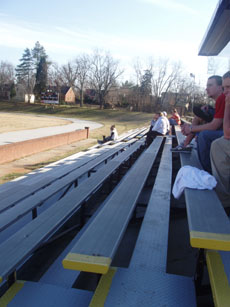
This may be one of the rare cases where a citizen/neighborhood group can take on a government agency – and win. We will try to keep our devoted readers up to date on this issue.

Former Miss Fullerton and current hand model Brittney Anderson shows a lot of moxie commenting on an FFFF post while relaxing on an Aussie beach near Brisbane, not long after losing the lower half of her body in a great white shark attack.

Friend of Fullerton D’annika Washington, a sophmore Art major from CSUF currently studying male nudes abroad, enjoys an engaging FFFF blog post while waiting for an absinthe at a hip cybercafe located in a trendy reconverted warehouse in Montparnasse, Paris.
 Marijuana is not a dangerous drug [”Proposed pot law ignites debate,” Opinion, Feb. 23]. Alcohol causes thousands of deaths each year from overdose (alcohol poisoning), while no one in recorded history has ever died from marijuana overdose. It’s physically impossible to smoke or ingest enough marijuana to come anywhere close to a harmful overdose. We have our legal drugs backward. Numerous scientific studies in Canada and Europe have proven that pot is safer than most FDA-approved prescription drugs. Habitual pot smoking doesn’t even significantly increase the risk of cancer. The worst side effect from chronic pot use is chronic laziness. And the studies that claim pot is a “gateway drug” are inherently flawed because the omit alcohol, tobacco and prescription drug abuse.
Marijuana is not a dangerous drug [”Proposed pot law ignites debate,” Opinion, Feb. 23]. Alcohol causes thousands of deaths each year from overdose (alcohol poisoning), while no one in recorded history has ever died from marijuana overdose. It’s physically impossible to smoke or ingest enough marijuana to come anywhere close to a harmful overdose. We have our legal drugs backward. Numerous scientific studies in Canada and Europe have proven that pot is safer than most FDA-approved prescription drugs. Habitual pot smoking doesn’t even significantly increase the risk of cancer. The worst side effect from chronic pot use is chronic laziness. And the studies that claim pot is a “gateway drug” are inherently flawed because the omit alcohol, tobacco and prescription drug abuse.
The argument that legalization will lead to an increase in traffic accidents is also flawed. Of the millions of pot smokers who are currently breaking the law, studies and statistics show that only a small percentage are stupid enough to drive while stoned.
Those like myself who would be inclined to smoke pot once it’s legal, but who currently refrain, are already respectful of the law, and, therefore, would not be likely to drive stoned once it’s legal.
Marijuana was made illegal for two purely political reasons. The first was a back-door agreement that ended alcohol prohibition. The prohibitionists wanted something in return for alcohol’s return to the market; marijuana was the trade off. Second, William Randolph Hearst, the newspaper magnate, wanted to eliminate the hemp-based paper competition for his paper mills.
David Santucci
OC Register, February 27, 2009

As of Saturday, March 7th The Friends are saddened to report that Jan Flory’s dog is still dead.

Is Fullerton ready for a John and Ken invasion? The Tax Revolt 2009 Facebook page has announced a huge protest to be held in Fullerton, as follows: Click here for details.
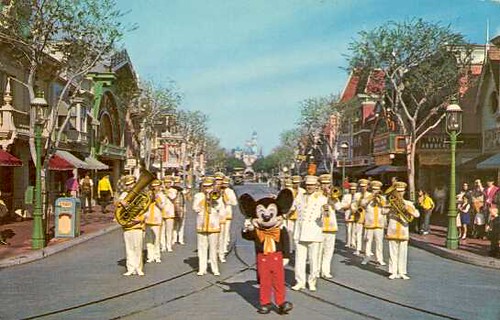
Lost in the commotion of last fall’s election excitement was a short letter to the Fullerton Observer by Tom Dalton, Fullerton Heritage’s President-for-Life. It appeared in the early September issue. It seemed to be a very belated response to the letter I had written some time before, and that I just posted here on our blog. Well, I’m posting a copy of Mr. Dalton’s letter here as well as a response I sent to the Observer’s editor. Please note that the Observer never printed my letter rebutting Tom Dalton’s, but now for the very first time, Loyal Friends, you may enjoy it here!
First Mr. Dalton’s missive:
College Buildings
Fullerton College dedicated the latest in a series of new buildings on the Fullerton campus August 15, 2008. The Classroom Office Building joins the Library and the Student Center as another example of how new construction can complement and even improve on the overall historic and architectural character of the campus complex. Period design features, proper scale and proportions, and use of appropriate materials on these buildings reflect the style and character of the original campus. And let us not forget the wonderful results of the restoration work on the Wilshire Continuing Education complex. Fullerton College President Kathleen Hodge, former District Chancellor Jerome Hunter, and the District Board are all to be commended for their steadfast commitment to honor the past by foregoing faddish architecture that others often use to make their own statements. Fullerton College has made the strongest statement of all by preserving its heritage. Fullerton Heritage salutes you! Keep up the good work.
Tom Dalton, President Fullerton Heritage
Well, Tom has had his bootlicking say, and now I will share my thoughts on the subject:
Editor:
I just read Tom Dalton’s recent tribute to the wisdom of the NOCCCD Trustees for their dismal architectural failures on the Fullerton College campus, as printed in your September edition. Tom’s letter must have pleased the trustee who asked him to write it, but it left me wondering why these folks choose to defend the indefensible – rather than develop a new policy of building modern architecture on our campus. Well, maybe they ought to be defensive! Tom tells us the pseudo-historical details, the materials, and the proportions of the new buildings are harmonious with the historical structures on campus. I guess he expects us to take his word for it. But the commonsense of anyone standing in the central quad will tell him that the new library is an overbearing, out-of-scale monstrosity.
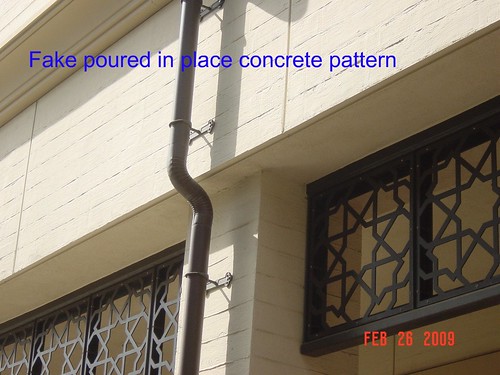
The fake concrete form patterns impressed on hollow stucco walls, the awkward fenestration, and the ludicrous cupola only add insult to injury. It’s not easy to create buildings that are both tacky and unoriginal, but whoever designed this building achieved this dubious distinction. The image and caption on the cover of your early October issue is telling: Tiles Fall off the Dome of the New Library During Storm (what storm was that, by the way?). Further comment is unnecessary.
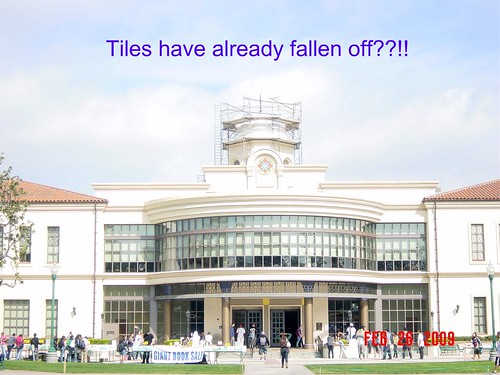
Why does Tom admire architecture that hides its steel structure within hollow walls made of metal studs, lath, and plaster? He says this sort of thing goes well with the existing buildings, and again he seems to think we’ll take his word for it. But why should we accept the idea that boring, dishonest, clunky buildings are anything but an insult to historical structures? Because Tom says so? The new building on Chapman Avenue with its false arches assaults passersby with a sort of stubborn muteness; it is a dull, blocky, inert monument to creative bankruptcy, without a single redeeming architectural quality.
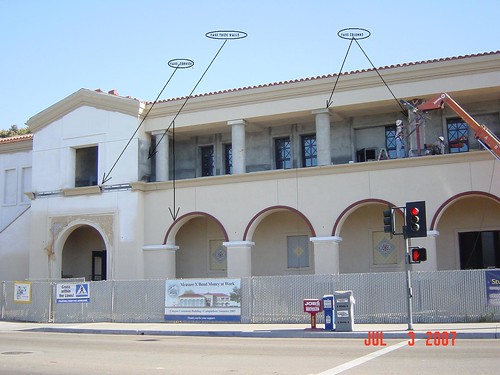
Tom piously warns us against the evil of architectural fads, by which I think we can assume he means contemporary architecture that doesn’t ape the original Mediterranean themes of the WPA buildings on campus. And so, innovative modern architecture on campus of the sort pioneered in Southern California by masters such as Frank Lloyd Wright, Rudolf Schindler and Richard Neutra and their followers would likely be dismissed as faddish by Dalton, just as their work was scorned by philistines of an earlier time who preferred period revivals such as Stockbroker Tudor and French Provincial as safe, tasteful bets for the local gentry.
But must the public, the students, and the faculty accept fake arches, Styrofoam cornices, and hidden structural members because they gratify Tom and his like minded friends on the Board of Trustees? We should recognize a higher responsibility than weakly regurgitating forms from the past and doing even that poorly. There is no premium paid for good, modern architecture. It costs no more than the uninspired junk the North Orange County Community College District Trustees are foisting on us. And in the long run good architecture will cost less. Someone at the top must make the commitment.
There really is a bigger issue that falls outside the penlight illumination cast by Tom Dalton’s personal aesthetic sensibility. Isn’t it the responsibility of an academic institution to promote creative excellence and shouldn’t that ideal be enshrined in the college’s built environment? Timid and trite architectural expression seems contrary to the very mission of an academic institution. On top of that, it’s a waste of money.
In a few years, as the dreary McSpanish dinosaurs of my Alma Mater disintegrate into a well-deserved decrepitude, Trustees will no doubt float yet another bond to pay for their replacement. Then, hopefully, some future generation will enjoy new creative and dynamic architecture on campus.
Tony Bushala
Founder, Fullerton Heritage
